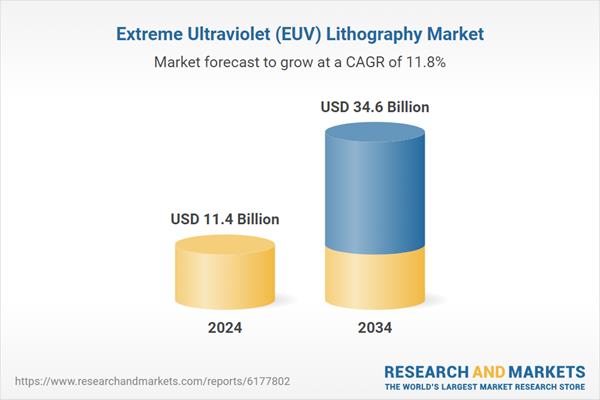This surge is attributed to EUV’s critical role in advancing next-gen semiconductor manufacturing. As chipmakers increasingly transition to 5 nm and 3 nm process nodes, the demand for lithography systems capable of supporting finer geometries, higher integration density, and improved yields has grown substantially. The need for more efficient chips to power artificial intelligence, high-performance computing, and 5G applications is accelerating this shift. EUV lithography delivers the resolution and throughput required to manufacture complex integrated circuits with extreme precision. Additionally, rising capital expenditure by foundries and integrated device manufacturers (IDMs) across Asia-Pacific and North America, along with government-backed semiconductor initiatives, is fostering the adoption of EUV systems. Technological leadership from key suppliers and the industry's focus on scaling advanced logic and memory nodes are creating a sustained growth environment.
In 2024, the light source segment generated USD 4.3 billion. This leadership is driven by the increasing demand for high-powered, stable EUV light sources, essential for high-volume chip production at cutting-edge nodes. Manufacturers continue to invest in improving the power and stability of these systems to enable precise wafer exposure and boost overall fab productivity. Enhancements in laser-produced plasma (LPP) systems have played a pivotal role in reducing system downtime and increasing throughput, making light source advancements a cornerstone of EUV technology expansion.
The mask inspection segment is anticipated to grow at a CAGR of 13% through 2034. This growth is propelled by the rising complexity of EUV photomasks, which demand highly sensitive and accurate inspection tools. As the industry evolves toward increasingly miniaturized and multi-patterned chip architectures, the need to detect even minute mask defects becomes vital to prevent yield loss. This trend is significantly driving investment in cutting-edge inspection technologies, establishing this segment as a critical growth contributor.
North America Extreme Ultraviolet (EUV) Lithography Market held a 26.7% share in 2024, representing a market value of USD 3 billion. The region’s growth remains stable, underpinned by a robust semiconductor manufacturing ecosystem, rising demand for advanced chip architectures, and ongoing investments in AI and HPC infrastructure. Furthermore, the adoption of EUV tools for advanced logic nodes and innovative packaging solutions aligns with national priorities around technological leadership and supply chain security, reinforcing North America’s position in the global market.
Key companies shaping the Global Extreme Ultraviolet (EUV) Lithography Market landscape include Carl Zeiss AG, NuFlare Technology Inc., Lasertec Corporation, Nikon Corporation, Photronics, Inc., ADVANTEST CORPORATION, Ushio Inc., SUSS MicroTec SE, Energetiq Technology, Inc., HOYA Corporation, TOPPAN Holdings Inc., AGC Inc., ASML, TRUMPF, and NTT Advanced Technology Corporation. To strengthen their market positioning, companies are investing in R&D to enhance light source performance, inspection accuracy, and mask handling technologies. Partnerships between OEMs and foundries are expanding to develop node-specific solutions, while supply chain diversification is being pursued to manage equipment lead times.
Comprehensive Market Analysis and Forecast
- Industry trends, key growth drivers, challenges, future opportunities, and regulatory landscape
- Competitive landscape with Porter’s Five Forces and PESTEL analysis
- Market size, segmentation, and regional forecasts
- In-depth company profiles, business strategies, financial insights, and SWOT analysis
This product will be delivered within 2-4 business days.
Table of Contents
Companies Mentioned
The companies profiled in this Extreme Ultraviolet (EUV) Lithography market report include:- ADVANTEST CORPORATION
- AGC Inc.
- ASML
- Carl Zeiss AG
- Energetiq Technology, Inc.
- HOYA Corporation
- Lasertec Corporation
- NTT Advanced Technology Corporation
- Nikon Corporation
- NuFlare Technology Inc.
- Photronics, Inc.
- TOPPAN Holdings Inc.
- TRUMPF
- SUSS MicroTec SE
- Ushio Inc.
Table Information
| Report Attribute | Details |
|---|---|
| No. of Pages | 190 |
| Published | September 2025 |
| Forecast Period | 2024 - 2034 |
| Estimated Market Value ( USD | $ 11.4 Billion |
| Forecasted Market Value ( USD | $ 34.6 Billion |
| Compound Annual Growth Rate | 11.8% |
| Regions Covered | Global |
| No. of Companies Mentioned | 16 |








